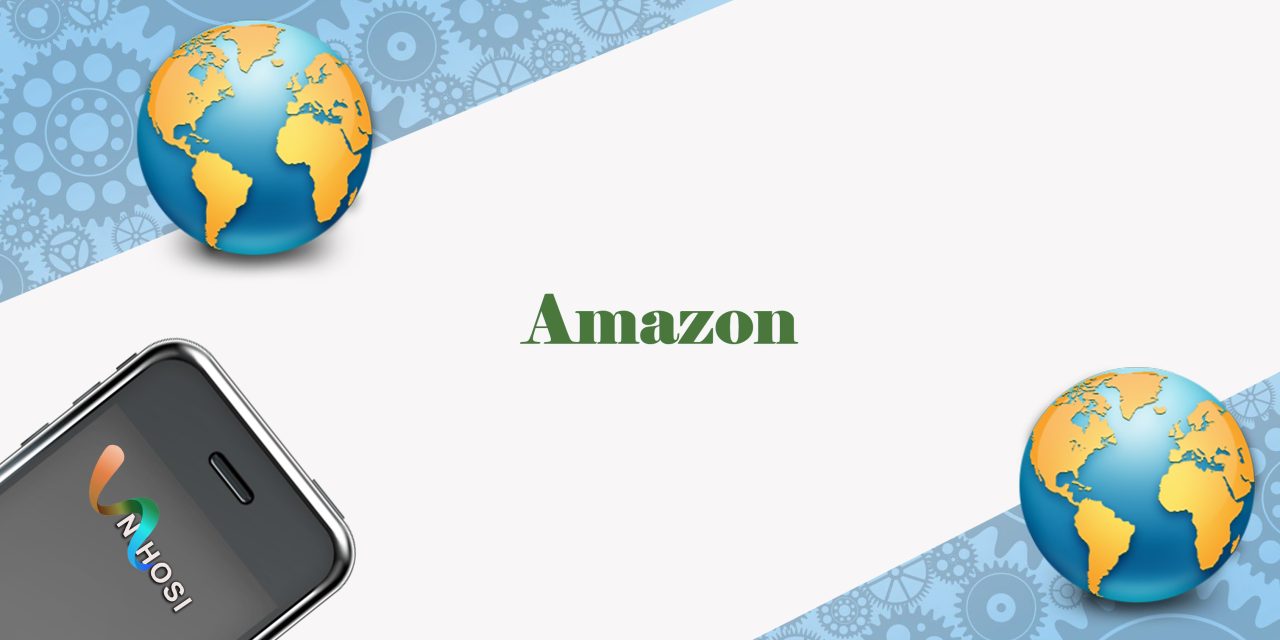In the vast expanse of the digital universe, a colossal entity reigns supreme – Amazon. With its genesis in a nondescript garage in Seattle, to its meteoric rise as a global behemoth, Amazon has fundamentally disrupted the traditional dynamics of retail. It has revolutionised the way people buy and sell, transcending geographic boundaries and bridging global markets.
From the quintessential online bookstore in 1994 to the world’s largest online retailer, the Amazon story is an inspiring tale of innovation, resilience, and customer obsession. Today, the Amazon brand name is synonymous with online shopping, setting high standards for price, convenience, and speed that collectively define the ‘Amazon Effect’. But how did a simple online marketplace evolve into a global force shaping the future of retail, technology, and entertainment?
In this comprehensive article, we delve into the intricate tapestry of Amazon’s journey. We explore its inception and growth, the turning points that marked its ascendancy, the underpinnings of its business model, and the profound impact it has had on retail and consumer behaviour. We also scrutinise the challenges and criticisms it has faced and provide insights into what the future might hold for this giant.
So, fasten your seatbelts and join us as we embark on a voyage through the history and evolution of Amazon – a testament to the transformative power of technology and the boundless potential of e-commerce.
In this digital age, is there anything more potent than the two-click purchase, or the allure of next-day delivery? Welcome to the Amazon era – an era marked by convenience, innovation, and a relentless pursuit of customer satisfaction.
The Genesis of Amazon
The tale of Amazon’s inception is one steeped in determination, foresight, and an audacious belief in the potential of the internet. The seeds of what would become the world’s largest online retailer were sown in 1994 by Jeff Bezos, a visionary with a firm conviction in the power of the digital revolution.
Humble Beginnings
Every great venture starts with a humble beginning, and Amazon was no different. Jeff Bezos, a Princeton graduate and Vice President at D.E. Shaw, a Wall Street firm, was intrigued by the rapid growth of the internet. In 1994, he quit his lucrative job, moved to Seattle, and began working out of his garage.
He began by compiling a list of 20 products that he could potentially sell on the Internet. The idea was to find items that customers would feel comfortable buying without having to inspect them in person. Books topped the list due to their low cost and universal demand, coupled with a rich catalogue of titles that no physical store could match. This led to the birth of Amazon.com, an online bookstore that was launched on July 16, 1995.
A Vision for the Future
Amazon was always destined to be more than just an online bookstore. Jeff Bezos had the vision to create ‘the everything store’ – an online marketplace that sold virtually everything. He saw the transformative potential of the internet long before it was mainstream and envisioned a retail revolution where consumers worldwide could purchase products of their choice from the comfort of their homes.
Bezos’ ambition was reflected in Amazon’s name, chosen for the vast South American river reflecting the vast selection he wanted the company to offer. Moreover, the name’s early position in the alphabet ensured it would appear at the top of any alphabetical list, another strategic decision reflecting Bezos’ forward-thinking approach.
Amazon’s logo, with its smile-shaped arrow from the letter ‘a to ‘z’, is a visual representation of this vision. It reflects the company’s aim to provide every product from A to Z, ensuring customer satisfaction (hence the smile) with its service.
These early decisions were instrumental in shaping Amazon’s journey. In the years that followed, Amazon expanded its product categories, geographies, and customer base, demonstrating that its founder’s ambitious vision was becoming a reality.
This vision, coupled with an unshakeable belief in the power of technology, laid the foundation for Amazon’s ascendency, transforming it from a simple online bookstore into the world’s largest online retailer.
Amazon’s Meteoric Rise
Charting the meteoric rise of Amazon from an online bookstore to a global retail powerhouse is a journey replete with strategic decisions, constant innovation, and relentless customer focus. Its growth story is a testament to the disruptive power of technology and the transformative potential of e-commerce.
The Leap into Electronics and General Merchandise
Amazon’s initial success as an online bookseller quickly opened the door to a wider range of possibilities. The company realised that the same platform that made buying books easier could be used to sell an array of products. In the late 1990s, Amazon took the crucial leap to expand its product offerings beyond books. The company moved into selling music CDs and DVDs, followed by electronics, toys, and a broad array of household items.
This strategic decision marked a significant shift in Amazon’s business model. Instead of being a specialised online retailer, Amazon started becoming a general online retailer, providing everything from kitchen utensils to computer hardware. It was the first step in realising Jeff Bezos’s vision of an ‘everything store’.
Going Global
A key turning point in Amazon’s journey was its expansion into international markets. Amazon went global in 1998 when it launched sites in the UK and Germany. The move marked the beginning of Amazon’s journey as an international retailer, allowing it to tap into vast new customer bases. Over the years, Amazon extended its footprint to multiple countries, including France, Japan, Canada, China, India, Australia, and several others.
Each new market offered unique opportunities and challenges, but Amazon’s commitment to customer service and its adaptive business model helped it succeed globally. This geographical diversification strategy further solidified Amazon’s position as the leading global e-commerce company.
The Advent of Amazon Prime
In 2005, Amazon launched a ground-breaking customer loyalty program called Amazon Prime. For an annual fee, Prime members received free two-day shipping on eligible items, marking a dramatic shift in online shopping expectations. The initiative was seen as risky at the time, but it ended up being a masterstroke.
Amazon Prime added an unprecedented level of convenience, further incentivising customers to shop on Amazon rather than at traditional retail stores. The program has since evolved to include a range of benefits, such as streaming video and music, exclusive access to certain deals, and more. As of 2021, Amazon Prime boasts over 200 million members globally, highlighting its success in driving customer loyalty and enhancing the shopping experience.
From its humble beginnings in a garage to its expansion into global markets, and the innovative Amazon Prime program, Amazon’s growth trajectory reflects its unceasing focus on customer convenience, innovation, and diversification. This steadfast commitment to these principles has enabled Amazon’s rise as the world’s largest online retailer.
Amazon’s Business Model
Amazon’s business model is an intricate amalgamation of diverse strategies designed to cater to multiple customer segments across the globe. Its success lies in its multifaceted approach, leveraging a mix of retail, technology, and content to provide a seamless and attractive customer experience.
Customer Centricity
The cornerstone of Amazon’s business model is its unwavering commitment to customer centricity. Bezos’s oft-quoted mantra, “Start with the customer and work backwards,” has been the guiding philosophy of Amazon’s business operations. The company has gone to great lengths to offer a vast selection, low prices, and supreme convenience.
From customer reviews to personalisation and easy returns, every feature on Amazon’s platform is designed with the customer in mind. This customer-centric approach has won Amazon a massive and loyal customer base, a crucial factor in its sustained success.
Continuous Innovation
Innovation is at the core of Amazon’s business model. The company’s culture encourages ‘out-of-the-box’ thinking and the willingness to take risks. This ethos is evident in its continuous stream of novel offerings.
From pioneering customer reviews and one-click shopping in the 1990s, Amazon has continuously raised the bar for e-commerce innovation. Its Kindle e-reader revolutionised how people read books, while its Echo smart speaker brought artificial intelligence into people’s homes with Alexa, Amazon’s virtual assistant.
Amazon Prime, Prime Video, and Amazon Fresh are other examples of how Amazon has continuously innovated to provide new services and enhance customer experience. Each innovation, in essence, reinforces Amazon’s customer-centric philosophy.
Diversification
Diversification has been another key pillar of Amazon’s business model. Amazon Web Services (AWS), the company’s cloud computing division, was launched in 2006 and has since become a significant profit driver. It offers a wide range of services, including computing power, storage, and database solutions, to businesses of all sizes globally.
Amazon has also ventured into entertainment with Amazon Studios and Amazon Music, capitalising on the increasing demand for digital content. Its acquisition of Whole Foods in 2017 marked its foray into brick-and-mortar retail, demonstrating its willingness to transcend traditional boundaries in its pursuit of growth.
In essence, Amazon’s business model is a confluence of customer centricity, continuous innovation, and strategic diversification. Its ability to adapt, innovate, and scale, all while keeping the customer at the centre of its universe, has fuelled its growth and solidified its position as the world’s largest online retailer.
The Impact of Amazon
The impact of Amazon extends far beyond its primary role as an online retailer. It has indelibly reshaped consumer behaviour, influenced global e-commerce trends, and triggered significant shifts in various sectors ranging from logistics to entertainment.
Reshaping Consumer Behaviour
The most profound impact of Amazon lies in its transformation of consumer behaviour. Amazon has set new standards for price, convenience, and delivery speed, leading to the ‘Amazon Effect’, a term used to describe the raised customer expectations that all other retailers must now contend with.
The concept of “one-click shopping” has not only made online shopping a hassle-free experience but also dramatically reduced the time taken from selecting a product to completing the purchase. Amazon’s introduction of customer reviews has made consumers more informed and empowered, and this transparency has become a norm across the retail industry.
Driving E-commerce Trends
Amazon’s innovative practices have also driven global e-commerce trends. Its use of data analytics to personalise customer experiences has been widely adopted across the industry. Furthermore, Amazon has been a pioneer in employing artificial intelligence and machine learning for product recommendations, demand forecasting, and fraud detection, setting the pace for other retailers to follow.
Amazon’s Prime Day, a one-day global shopping event exclusively for Prime members, has also created a new retail trend. It not only boosts sales but also attracts new Prime memberships, further consolidating Amazon’s customer base. This concept of creating an exclusive shopping event has been replicated by many e-commerce players globally.
Impact on Various Sectors
Amazon’s impact extends to various sectors, including logistics, technology, and entertainment. The company’s push for faster delivery times has triggered significant shifts in the logistics sector. Its tech division, Amazon Web Services (AWS), is a leader in the global cloud computing market. In the entertainment sector, Amazon Studios and Prime Video have stirred competition, making Amazon a key player in the digital streaming landscape.
In essence, Amazon’s impact is far-reaching and multifaceted. Its influence on consumer behaviour, e-commerce trends, and various sectors underscores its role as a significant player in the global economy. Amazon continues to push the boundaries of innovation, setting the pace for others to follow, and shaping the future of online retail.
Challenges and Criticisms
Despite its impressive growth and significant impact, Amazon’s journey hasn’t been without its share of hurdles and criticisms. From allegations of monopolistic behaviour to controversies around worker treatment, the company has faced and continues to grapple with various challenges.
Allegations of Monopolistic Behaviour
Amazon has faced criticism and legal challenges around the world for its alleged monopolistic practices. Critics argue that Amazon’s vast size and influence allow it to stifle competition, leading to an unhealthy concentration of market power. The company’s dual role as both a retailer and a platform for other retailers has also been a point of contention. Allegations suggest that Amazon uses its access to third-party seller data to launch its own products, giving it an unfair competitive advantage.
Governments and regulatory bodies globally are scrutinizing these allegations, and the company has faced antitrust investigations in the US, EU, and other regions. The outcomes of these investigations could have significant implications for Amazon’s business practices and its future growth.
Worker Treatment and Labour Issues
Amazon has also faced scrutiny over its treatment of workers. There have been numerous reports of demanding work conditions in Amazon’s warehouses, including long hours, physically taxing tasks, and high-stress environments. Amazon has also faced criticism for its stance on labour unions.
These issues have led to public protests and strikes in various countries, impacting Amazon’s reputation. The company maintains that it is committed to ensuring the health and safety of its employees, and it has taken steps to improve working conditions in response to these criticisms.
Environmental Impact
Amazon’s environmental impact, particularly related to packaging waste and carbon emissions from its delivery network, has also been a subject of concern. The company has responded by launching several initiatives aimed at reducing its environmental footprint. Its Climate Pledge, for instance, commits to achieving net-zero carbon emissions by 2040.
In conclusion, as Amazon continues to expand its global presence and influence, addressing these challenges and criticisms is crucial for its long-term sustainability and success. It is evident that Amazon’s journey forward must be navigated with a balanced approach to growth, corporate responsibility, and stakeholder interests.
The Future of Amazon
As we look towards the future, Amazon’s trajectory seems to be poised for continued growth and innovation. However, its path forward is likely to be shaped by several key factors, ranging from technological advancements to changing consumer behaviour and regulatory landscapes.
Leveraging Technological Advancements
Amazon’s future will undoubtedly be driven by technological advancements. Artificial Intelligence (AI) and Machine Learning (ML) already play a crucial role in Amazon’s operations, from personalising shopping experiences to streamlining warehouse operations. As these technologies continue to evolve, their application within Amazon’s ecosystem is likely to become even more pervasive and transformative.
Similarly, drone technology represents another avenue for future growth. Amazon has been investing in drone delivery for several years, and while regulatory hurdles remain, the prospect of drone deliveries could revolutionize its logistics and delivery system.
Expansion of Amazon Web Services (AWS)
Amazon Web Services (AWS) has emerged as a significant profit driver for Amazon. As businesses increasingly migrate to cloud-based solutions, the demand for AWS’s services is likely to grow exponentially. AWS’s continued expansion, both in terms of service offerings and geographical reach, represents a promising pathway for Amazon’s future growth.
Continued Diversification
Amazon’s future will also see continued diversification into new sectors. Whether it’s healthcare, as evidenced by the launch of Amazon Pharmacy and Amazon Care, or the brick-and-mortar retail sector, as demonstrated by its acquisition of Whole Foods and the launch of Amazon Go stores, Amazon’s propensity for disruption indicates that it will continue to diversify its business operations.
Navigating Regulatory Challenges
As previously discussed, Amazon faces growing regulatory scrutiny across the globe. The outcome of these investigations and the potential for new regulations represent significant variables that could shape Amazon’s future. Navigating these regulatory challenges will be crucial for Amazon’s sustained growth in the coming years.
In summary, the future of Amazon is poised at the intersection of opportunity and challenge. Its path forward will be marked by its ability to leverage technological advancements, expand AWS, continue diversification, and navigate a complex regulatory landscape. As it stands, Amazon’s relentless focus on customer-centric innovation, coupled with its proven adaptability, positions it well to navigate its future.
Conclusion
From its inception as an online bookstore to its evolution into the world’s largest online retailer, Amazon’s journey is a testament to the power of innovation, customer centricity, and a bold vision. Its impact on consumer behaviour, e-commerce trends, and various sectors is profound, making it a significant player in the global economy.
However, the company’s journey has not been without challenges. Allegations of monopolistic behaviour, criticisms over worker treatment, and environmental concerns pose significant challenges that Amazon must address as it moves forward.
As we gaze into the future, Amazon stands at a critical juncture. The road ahead is filled with promising opportunities, from leveraging technological advancements and expanding AWS to diversifying into new sectors. At the same time, navigating regulatory challenges will be crucial.
In the final analysis, Amazon’s journey encapsulates the transformative potential of e-commerce and digital technology. As the company continues to innovate and adapt in response to evolving consumer needs and market dynamics, its role as a global e-commerce leader appears set to continue. Whether you’re a customer, competitor, or observer, the Amazon story remains a fascinating study in growth, disruption, and constant evolution.











Subscribe To Our Newsletter
Join our mailing list to receive the latest news and updates from our team.
You have Successfully Subscribed!